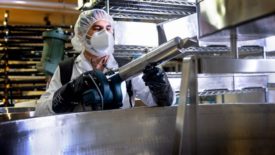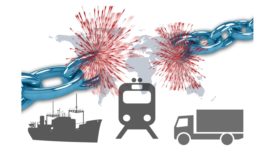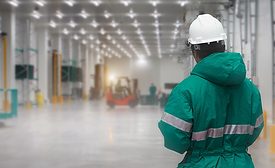Articles by Wayne Labs
Automation will solve many problems—but not without people supporting it.
Read More
Digital Transformation: Plan Now To Save Later
Food and beverage processors are implementing digital transformation projects to gain advantage over their competitors.
February 22, 2023
Tech to Enable Track and Trace
The FDA will require complete track and trace information within 24 hours.
February 10, 2023
Engineering R&D
New Ideas for Steam: Superheat it to Kill Pathogens on Contact
February 1, 2023
The Demand for Smart and Efficient Conveying Systems
Conveyor technology ranges from basic to smart with the ability to handle complex packaging systems.
January 25, 2023
Time for a Supply Chain System Update?
Supply chains have been tenuous for the last two years, and it’s not likely to get better any time soon.
January 16, 2023
Food Loss & Waste: It’s Everywhere in the Supply Chain
Food loss and waste (FLW) happens on every-level in the supply chain. The impacts of FLW are devastating and, thankfully, can be avoided through swift and direct action on every level.
November 28, 2022
Plant Operations & Engineering
Tech Update: Freezing & Cooling
Several freezing solutions are available to meet specific applications.
November 23, 2022
Smartphones on the plant floor: BYOD or company issued?
Smartphones and other devices make accessing IT/OT systems on the plant floor easier, but the use of personal devices may cause security and legal problems.
November 22, 2022
Elevate your expertise in food engineering with unparalleled insights and connections.
Get the latest industry updates tailored your way.
JOIN TODAY!Copyright ©2025. All Rights Reserved BNP Media.
Design, CMS, Hosting & Web Development :: ePublishing










